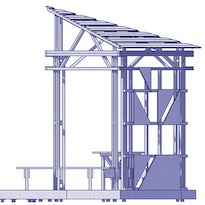The potential Roles of Design and Designers within a Time-based approach
Multiple temporalities: projects, processes and communities at SS. Trinità delle Monache in Naples
Abstract
Considering the urgency to update design disciplines in respect to the current times describable with the word transition, the paper proposes a critical analysis on the basis of a long research involving the former convent of the SS. Trinità delle Monache in Naples. The multiple research contexts have all been aimed at the recovery, valorization and opening to the city of the former convent. Focusing on this case study, the contribution identifies possible roles for the design and the designer within a time-based approach. Assuming the complexity and coexistence of multiple temporalities, one can broaden the spectrum of action of the project itself. In this sense, the contribution proposes six connotations of the project, through an examination of as many project experiences, to which correspond different purposes, communities, scales and – above all – temporalities. It is believed that the case study presented here provides a possible example of a minor and processual project developed within a time-based approach where the designer-researcher plays the role of the choral architect. Within this theoretical framework, the recognition of multiple and interrelated temporalities as indispensable tools of contemporary design is urgent.
Downloads

Downloads
Published
How to Cite
Issue
Section
License
Copyright (c) 2023 Giovangiuseppe Vannelli

This work is licensed under a Creative Commons Attribution 4.0 International License.
The authors keep their rights upon their work, although they transfer, in a non-exclusive way, the rights of exploitation (reproduction, publication, distribution, public dissemination and presentation) to the Journal. The authors are, therefore, free to enter additional, separate contracts for the non-exclusive distribution of the version of the work published in the Journal (for instance, by hosting in an institutional repository or publication in a book), provided credit is given that the work was initially published in this journal. The works are published under a Creative Commons Attribution 4.0 (CC BY 4.0) license.











